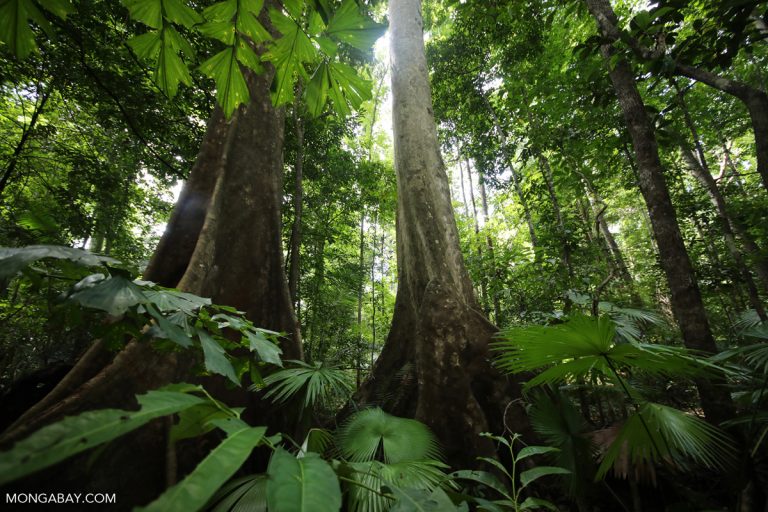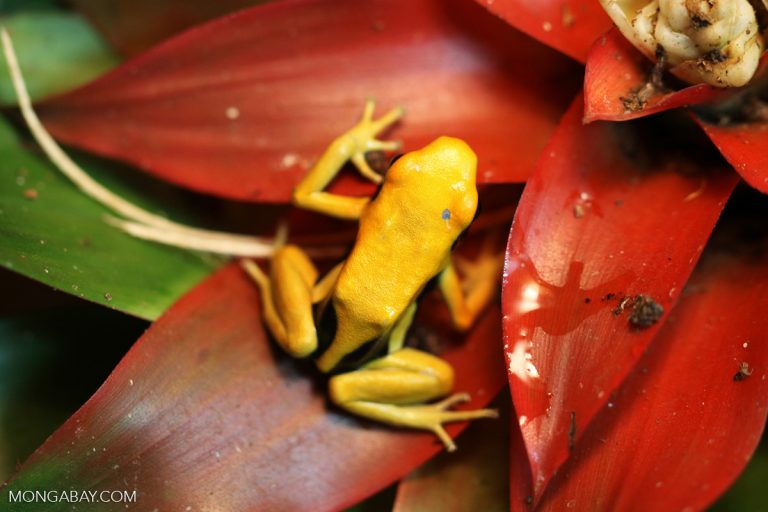By Lisa Algee
Edited by -Vinuri Randhula Silva,
This article is part of a four-part series on biodiversity consisting of the following articles:
- Biodiversity (this article)
- Deforestation
- Palm Oil
- Conservation
Each has been taken from the Mongabay main site and adapted to meet 3rd grade educational standards. Ideally, they are to be read in the above order.
Also note that we provide remedial-reading versions for each of the four articles. These versions are designed to meet 3rd grade science standards, but 2nd grade reading standards.
What Is Biodiversity? Why Is It Important?
Take a walk outside your home or open your window. Sit and listen. How many different animal sounds do you hear? If you live in a city you may hear cats, dogs, squirrels, bees, flies, mosquitoes and several different birds. If you live in the countryside you will probably hear more. List your sounds here:
Now listen to the sounds of a rainforest. Click play.

How many different sounds did you hear?
Biodiversity is a compound word.
Bio is a Greek word. It means life.
Diversity means many different kinds.
So biodiversity means many different kinds of life.
Rainforests have great biodiversity. Here are some other ways to look at biodiversity in a rainforest.
Rainforests cover only 2 percent of the planet Earth:

But more than half of all animals and plants live in a rainforest:

Tropical rainforests are hot, moist ecosystems found near the Earth’s equator. This is where the tropical rainforests are.

Here are some examples of the richness of rainforests:
- Rainforests have 170,000 of the world’s 250,000 known plant species.
- The United States has 81 species of frogs, while Madagascar, which is smaller than Texas, may have 500 species.
- An area of rainforest the size of one football field may have more than 200 species of trees, while an equal area of forest in the United States may have fewer than 10.
- Europe has 570 butterfly species, while Manu National Park, a single rainforest in Peru, has 1,300 species.
- A single bush in the Amazon may have more species of ants than the entire British Isles.
Why do rainforests have so many kinds of plants and animals?
Rainforests have so many plants and animals for the following reasons:
- Climate:
- Sunlight – because rainforests are located in tropical regions, they get a lot of sunlight. The sunlight helps plants to grow. The sunlight is turned into energy by plants through the process of photosynthesis. Since there is a lot of sunlight, there is a lot of energy in the rainforest plants. Animals eat the plants. The abundance of energy supports an abundance of plant and animal species.
- Water – Rainforests get a lot of rain. It can rain every day. Plants and animals use the water.
- Temperature – Tropical Rainforests are hot. They are near the equator. Plants can grow all year round in a tropical rainforest. That means there is always food for the animals to eat.

- Canopy: Plants don’t only grow on the forest floor. There is also a shrub layer, an understory, a canopy and an overstory. The canopy is made from the many overlapping branches and leaves of trees and vines as they grow towards the sky. It can be 100 feet or 30 meters above the ground. You can think of it as an apartment building with plants and animals living on every floor. Species live in each layer. For example, there are plants in the canopy called bromeliads that store water in their leaves. Frogs and other animals use these pockets of water for hunting and laying their eggs.
Why is biodiversity important?
Have you ever heard someone say “Everything is connected”? What does that mean?
Imagine you are building a large terrarium. In this terrarium you put soil, plants, water, and some critters, maybe ants, worms, frogs, crickets, snakes or rodents… There are also things you did not know you added such as bacteria in the soil or fungus on the plants. And of course there is air. Once you put the lid on you cannot open the terrarium again.
If you planned and chose well the terrarium will flourish and grow. Animals will survive by eating other animals or plants and giving birth to young. Plants will grow and divide or drop seeds to form new plants. These plants will clean the old used air. The water will evaporate, condense and precipitate in an endless cycle.
But if one of these is removed, life in the terrarium becomes unbalanced. Without worms the dead leaves are not eaten and turned into new soil. Without plants the air is not cleaned and renewed. Without crickets the frogs starve.
Our planet is a giant terrarium. Over hundreds of millions of years plants and animals have evolved to support each other. Plants give our earth air and water. Animals propagate plants by spreading seeds. And of course animals eat each other and plants. Humans eat both animals and plants.
Scientists at the University of Zurich in Switzerland did an experiment to see what happened in an ecosystem with different levels of biodiversity. They looked at algae and what happened when the temperature or the amount of salt was increased. They discovered that the more species of algae there are in a system, the better the system responded to and survived the stress.
Other scientists at Kansas State University studied grasslands during drought. They found that the greater number of grass species allowed the grasslands to survive times of low water. In both studies greater biodiversity was an advantage for survival.
A rainforest’s biodiversity is important because:
- High levels of biodiversity help a forest survive disease and stress.
- A large number of plant species means a large number of crops.
- A large number of plant species means a large number of medicines.
- Healthy forests clean the air we breathe.
- Healthy forests clean the water we drink.
- Healthy forests store water for the whole planet.
Adapted from Mongabay.com articles by:
- Rhett A. Butler; June 24, 2004 & December 5, 2015
- Bastian Steudel, Andy Hector, Thomas Friedl, Christian Löfke, Maike Lorenz, Moritz Wesche, Michael Kessler. Biodiversity effects on ecosystem functioning change along environmental stress gradients. Ecology Letters. 5 September, 2012. doi: 10.1111/j.1461-0248.2012.01863.x
- Division of Biology, Kansas State University, Manhattan, Kansas 66506, USA. Joseph M. Craine, Troy W. Ocheltree, Jesse B. Nippert, E. Gene Towne & Adam M. Skibbe


Comments
Post a Comment